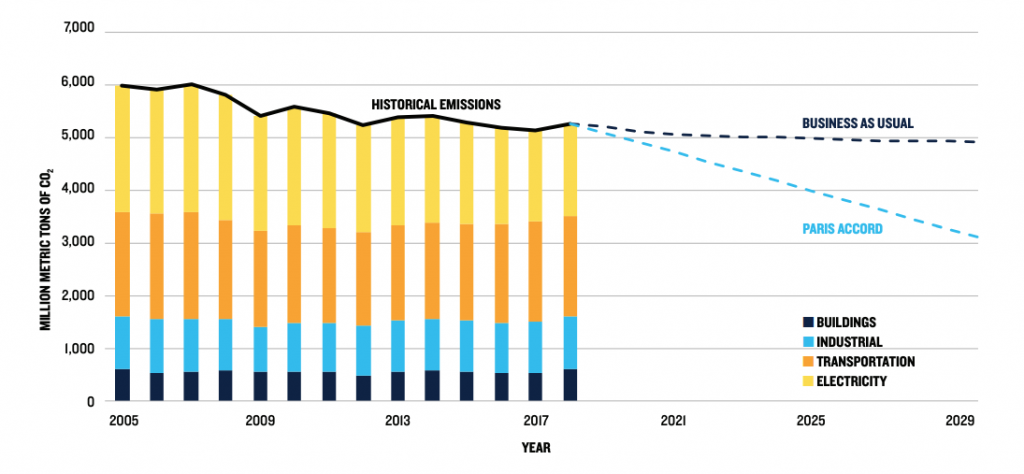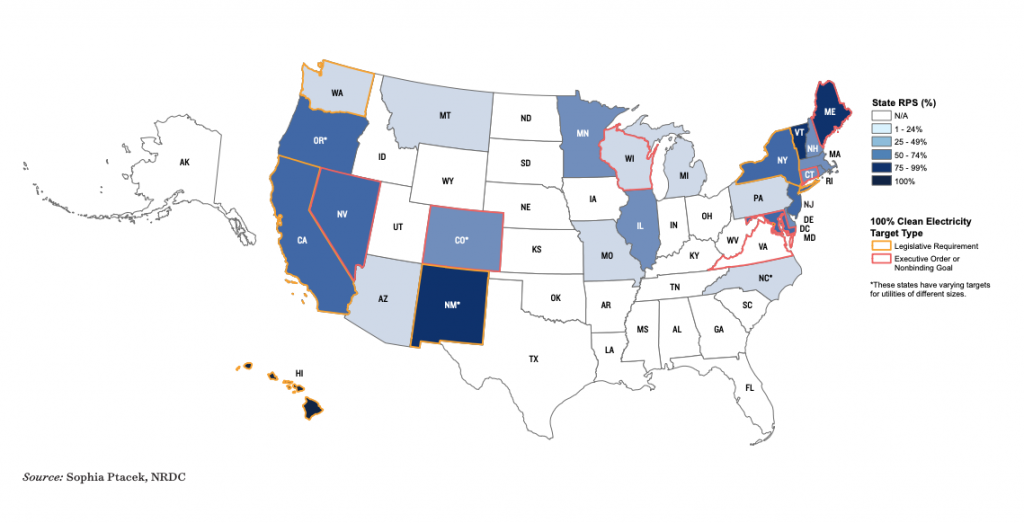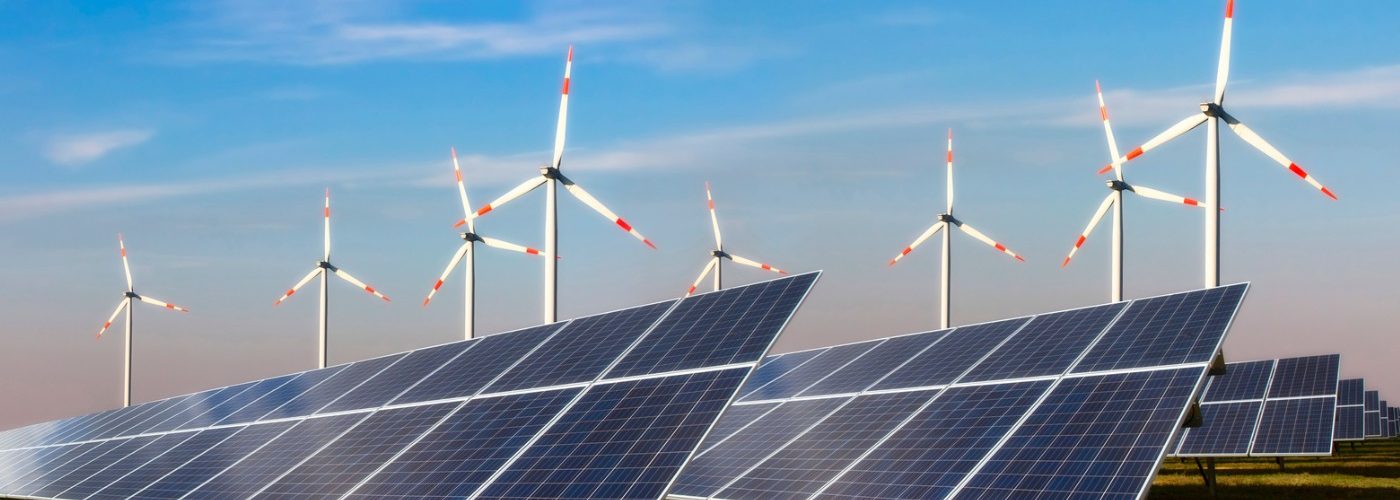For the past seven years, the Natural Resources Defense Council has issued a comprehensive annual report about the country’s energy status. While Sense’s mission is to help individual homeowners reduce their energy usage, we believe it’s important for everyone, and especially people who are already committed to energy reduction, to understand how our personal efforts fit into the broad picture. Here are some key takeaways from the NRDC report.
This year’s report includes good news and bad.
On the good news front, the country is making real progress in clean energy. Solar and wind energy are thriving, and the cost of clean energy continues to fall rapidly. Wind and solar are outcompeting coal power and are likely to rival natural gas costs within the next 15 years. Building a new wind or solar farm is often cheaper than running an existing coal plant.
Innovative technologies to address the highs and lows of renewable energy generation are becoming commercial realities in the utility sector, setting the scene for greater reliance on renewables. And coal power generation is at the lowest level since 1975.
More worrisome is the continuing expansion of natural gas and oil infrastructure, which threatens climate progress by locking the economy into fossil fuels.
On the bad news front, the overall levels of climate-warming emissions rose in 2018 for the first time in five years. Emissions came from a variety of sources (see chart below). Not only are U.S. emissions increasing at a time when they need to decline rapidly in order to meet goals set by the Paris Accord, this upwards trend is reflected globally. Carbon emissions worldwide were at an all-time high in 2018, after experiencing a plateau from 2014 to 2018.

Although emissions are still 12% below 2005 levels, achieving the goals set at the 2016 Paris Accord will require aggressive action. In 2018 the IPCC reported that failure to limit warming to 1.5 degrees Celsius could result in catastrophic and widespread harm. Getting to this goal will mean that the world needs to cut greenhouse gas emissions by 45% within the next 11 years.
Leading the Way to Lower Greenhouse Gases
Cities, states, and utilities across the country are leading the effort to reach these aggressive goals. Let’s start with utilities. In 2018 Xcel Energy, one of the largest electric utilities in the United States (covering parts of Colorado, New Mexico, Texas, Minnesota, Michigan, North Dakota, South Dakota, and Wisconsin), made a historic commitment to become 100% carbon free by 2050. Many other utilities quickly made their own commitments to carbon-free status.
Headquartered in Massachusetts, we’ve been impressed with a plan from National Grid, one of the largest electricity and gas utility companies in the Northeast. The Northeast 80x50 Pathway is an integrated blueprint for New England to reduce greenhouse gas emissions deeply below 1990 levels while supporting economic growth and maintaining affordability and customer choice. National Grid’s approach combines several mutually reinforcing strategies that together provide a clear pathway to significant emissions reductions and signal a paradigm shift in the way we all relate to energy.
National Grid’s Pathway calls for big shifts in the region’s energy systems by 2030, including:
- Accelerating the zero-carbon electricity transition by ramping up renewable electricity deployment to achieve 67% zero-carbon electricity supply.
- A transformation of the transport sector by reaching more than 10 million electric vehicles on Northeast roads (roughly 50% of all vehicles).
- A transformation of the heat sector by doubling the rate of efficiency retrofits and converting nearly all of the region’s 5 million oil-heated buildings to electric heat pumps or natural gas.
Beyond 2030, the Pathway calls for deeper and more sustained technological innovation coupled with increasingly ambitious policy action, according to the 80x50 Pathway document.
After years of indecision, state governments are taking action and responding with aggressive measures to curb carbon emissions. Five states — California, Hawaii, Nevada, New York, and Washington — as well as Washington, D.C., and Puerto Rico have enacted 100% carbon-free standards and set a timeline of about 20 years to accomplish it. This represents 11% of national electric sales and 5.4% of national utility carbon emissions.
Four more states are actively debating 100% carbon-free standards and several governors have made pledges to be carbon-free by 2050: Colorado, Connecticut, Illinois, Michigan, Oregon, and Wisconsin. Other states have set 50% to 75% carbon reduction goals, such as Maryland, New Jersey, and Vermont.
New York’s commitment to reaching net-zero carbon emissions for the entire state economy has a deadline of 2050, including an 85% decrease in greenhouse gas emissions. By 2030, the state must also generate 70% of its electricity from renewable sources — up from 23% currently — the vast majority of that coming from hydroelectric power.

What You Can Do
A recent issue of Realtor Magazine ran an article by Sense CEO Mike Phillips with tips for homeowners that are in alignment with policy recommendations and utility plans.
- If you live in a state with time-of-use pricing, adjust your energy lifestyle to match the peaks in renewable power flowing into the grid. Schedule energy intensive activities when the utility rates are lowest, not only to save money but because it’s the time when renewable energies are at a peak.
- Consider getting solar panels in 2019 while federal incentives are still in place. Figure out your potential solar savings (Project Sunroof is a good resource to estimate a roof’s solar potential). Be sure to check out state incentives as well. Solar rebates are popular among voters, so it’s likely that many state incentives will be extended past 2020.
- States and utilities have already started to offer incentives to encourage a move to heat pumps, which are two to three times more efficient than burning fossil fuels like natural gas or heating oil. Although heat pumps are powered by electricity, new technologically advanced pumps are so efficient that they cost much less to run than a conventional oil heat system.
- If you live in a new, energy-efficient home, don’t take it for granted. How you live is as important as the home itself. Know how much energy your heating, cooling, appliances, lighting, and consumer electronics are all using on a day-to-day basis. Actively seek out energy-efficient appliances and consumer electronics, and use smart thermostats to control your heating and cooling usage (and costs). Take advantage of smart plugs and strips to keep your vampire power drain to a minimum.
- If you live in an older home, keep looking for ways to make the house’s envelope tighter so your heating or cooling isn’t escaping. Many states offer energy efficiency programs through the utilities with free assistance to make your home more efficient. Visit the Database of State Incentives for Renewables & Efficiency to find your state’s incentive programs.
- Look for energy hogs; every house has them. Aim for at least 8% energy savings in the next year and target vampire energy losses, which impact 23% of the average home. Prime culprits are older entertainment systems or printers with “fast start mode,” computers left on instead of hibernating, roof heating coils left on, and so on.
- Assess your transportation choices, and buy an electric vehicle or hybrid as your next car. Right now, consumers can take advantage of state and federal tax credits for electric vehicles before they sunset starting in 2020. Ford, Honda, BMW, and Volkswagen have agreed to a voluntary framework developed by the state of California for continued annual reductions of vehicle greenhouse gas emissions through the 2026 model year. Consumers can expect to see new cars that achieve 50 MPG fuel economies, as well as continued innovation toward electric vehicles by these automakers.
Can you say that your current lifestyle matches these recommendations? If not, and if you’re serious about reducing your carbon footprint, start taking steps now toward your own low-carbon future. Each decision you make — to buy a more efficient car, get solar panels or reduce your vampire power — will have a positive impact on the planet’s future.


















